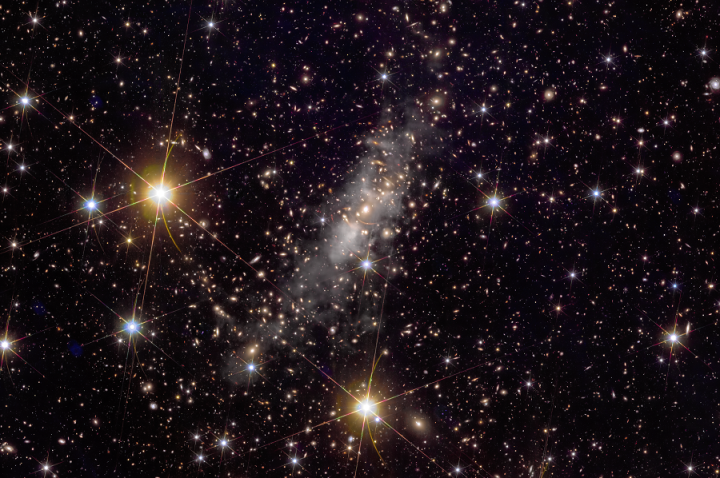Images of the Universe released from the early stages of a European satellite mission demonstrate the technology’s potential to reveal secrets of the cosmos.

The observations – from the European Space Agency’s satellite Euclid – gives scientists initial insights into the telescope’s power and ability to hunt for rogue planets, discover distant galaxies and observe newly identified clusters of stars.
Findings from the project, which involves researchers from the University of Edinburgh, also include the largest images of the Universe taken from space.
The satellite, launched in July 2023, will examine around 1.5 billion galaxies to create the most accurate 3D map of the Universe to date.
Early observations
The first set of Euclid’s early observations targeted 17 astronomical objects including, clusters of galaxies, star clusters and clouds of star-forming gas, from its position 1 million miles from Earth.
Over its six-year mission, Euclid aims to uncover secrets of the dark cosmos and reveal how and why the Universe looks as it does today, experts say.
In addition to its primary mission, Euclid’s images will enable a broad range of other science investigations, a taste of which is delivered by these first incredible images.

Dark cosmos
The mission will gather specific scientific data which scientists will use to attempt to define two little-understood phenomena in the Universe – dark matter and dark energy.
Dark matter is thought to make up around 80 per cent of all the mass in the Universe and binds galaxies together, however, it does not reflect or emit light and its nature is not well understood.
Dark energy is pushing galaxies apart, causing the expansion of the Universe to accelerate. It appears to drive cosmic objects apart at an increasingly rapid rate rather than drawing them together as gravity does, researchers say.
Data analysis
Astronomers from the University’s School of Physics and Astronomy are leading on two critical areas of research, including analysis of data relating to gravitational lensing – which occurs when a large galaxy causes the path of light to bend around it.
Gravitational lensing produces very small changes in the images of galaxies. This can be used to map the distribution of dark matter in space and how it has evolved over time.
Data centre
The University is also hosting Euclid’s UK Science Data Centre, which is processing huge amounts of data generated throughout the mission, for scientists to analyse worldwide.

These new images from Euclid are absolutely stunning. They demonstrate both the image quality and the huge area of the sky seen by Euclid in each observation. The image of the galaxy cluster, Abell 2390, is a spectacular demonstration of Euclid’s ability to carry out the highest quality gravitational lensing survey we had hoped for. Each of the images are rich in information which we are only starting to mine. This is just a taster of what Euclid will do.
It has been incredibly exciting for me and my team to work with these first images from Euclid. The level of detail is truly astonishing, and the data has already yielded remarkable insights into some of the nearest galaxies beyond the Milky Way.







